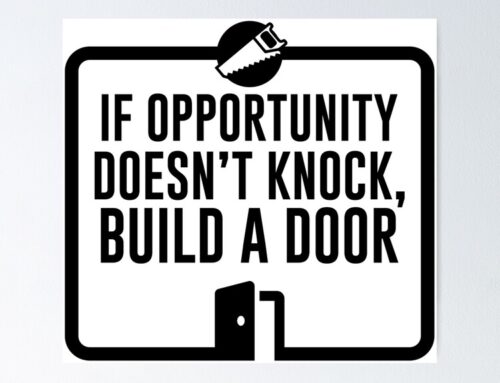We are often asked about paper weights and why they are so confusing. I hope this article I found helps clear things up and help with understanding and ordering the proper paper for your project.
KEY CONCEPTS:
Printing is more than reproducing words and images on paper. It is the physical experience itself – holding the piece, feeling the paper, the interplay of ink and paper – that printing is concerned with. As such, paper – the vehicle of the message, represents a substantial cost item in a printed job. Understanding paper and picking the right sheet for your job can make or break your job.
Typically, letterheads will be imprinted using laser imaging or run through copiers. It is important that you, as the buyer, tell us (the printer) how you intend to use the printed piece. Do not assume that all papers can be used for all processes. It is our job to advise you in whether the paper you selected is compatible for your intended uses. We often provide sample papers for you to try on your machines, to insure success of the final produce use.
The same caveats apply to inks. Inks containing certain waxes and some other ingredients will soften as a result of the heat generated in a laser printer or copy machine. Again, we need to understand fully what the intended use of the project will be.
GRADES OF PAPER:
There are seven basic grades (or types) of papers used in the commercial and quick printing industry.
1. BOND: Usually used for flyers, handouts, business forms and copiers. This is the more economical grade of paper.
2. WRITING: Usually used for stationery and projects that require a nicer look. Typically these papers are more decorative in colors with many types of surface textures such as a linen or a laid type finish.
3. BOOK/OFFSET: The most commonly used coated and uncoated papers for printing items such as manuals and books. These papers are commonly evaluated for their opacity and whiteness. However, there are colors available too.
4. TEXT: High-quality sheets are available in a variety of surfaces and colors and are commonly used for marketing pieces such as brochures.
5. COVER: Used when great bulk is required such as book covers, postcards, business cards and marketing materials. These papers are also available in a wide variety of surfaces and colors.
6. TAG/BRISTOL/INDEX: Smooth surface papers and mostly uncoated, except for bristols. Uses include displays, file folders, index cards and tickets.
7: SYNTETHICS: New papers are being introduced to the market place that are water resistant and are treated to run on certain digital presses. These papers are great for menus, and items that are commonly laminated.
Within each grade, there are other distinctions, based on brightness, opacity, and fiber content. For instance, there are matte, premium, and ultra gloss finished to coated papers. In the uncaoted book, there is #1 Offset, #3 offset and Opaque grades. Text papers are distinguished by finishes like smooth/vellum, felt/embossed, laid, and linen finishes.
BASIS WEIGHT:
Getting more specific, people identify papers in terms of their basis weights. Since coated papers are more compressed (calendered) you can’t necessarily keep the same weight when you switch grades. For instance you may go from a 60# uncoated to a 70#coated sheet to keep the same thickness. That is why papers are usually referred to by weight and grade.
What is basis weight? It is the weight of 500 sheets of paper cut to a basis size. So, 500 sheets of 25″x38″, 60# offset weigh 60lbs. The basis size for bond is 17″x22″; for text, offset, and coated 25″x38″, and for cover 20″x26″. That is why two similar sheets of different grades my have the very different basis weights, for instance, 24# bond and 50# offset are the same weight and grade of paper.
Different grades of paper and their weights;
- BONDS: usually 16# for forms, 20# for copying, and 24# for stationery.
- TEXT: Ranges in weight form 60#, 70#, 80# to 100#, but the most common weights are 70# or 80#
- OFFSET: Usually a 50# to 70# stock.
- COATED BOOK: Generally goes from 30# to 70# for web printing, 60# to 110# for sheet fed.
- COVER: Comes in 60#, 65#, 80# and or 100#, #110, #130 weights.
RECYCLED PAPERS:
Our national waste disposal challenges has let to the increasing use of recycled papers. Paper companies have answered increasing demand with offerings in all paper grades. While recycled sheets still command a premium over virgin stock, they are more widely available than in previous years, and have come down extensively in price.
At this time there are still difference in definitions associated with recycled papers and concerned buyers need to make sure that they make proper decisions for runnability and quality.
DIGITAL PAPERS:
High-speed laser printing and digital printing has created a whole new “johnra” of printing demands. With the wide array of equipment and technologies, many digital papers are “treated” to create amazing results. Usually, such equipment will stipulate what papers work best for the machine. Today, paper mills are developing full lines of paper that work both in the digital and offset world. Print & Copy Factory is committed to staying on top of the technology and papers to provide our customer with the best results and price.
Resource: PPIA

206-391-5682
i2i@i2idirectmarketing.com
www.i2idirectmarketing.com
“…all deliveries GPS tracked…”




